Homemade Fish Sauce (Without Fish!)
Homemade fish sauce is wonderful stuff. Its flavor is always a wonderful addition to many meals you cook at home.
Fish sauce has a strong umami flavor and is sometimes considered an acquired taste. But it’s an amazing way to add tons of flavor to a lot of different dishes. Everything from seafood-based soups to Asian meals benefit from the addition of fish sauce. But you don’t have to use fish to make it. Whether you simply don’t have any, don’t like it, or are plant-based, you can still enjoy the addition of this sauce to any of your home-cooked meals.
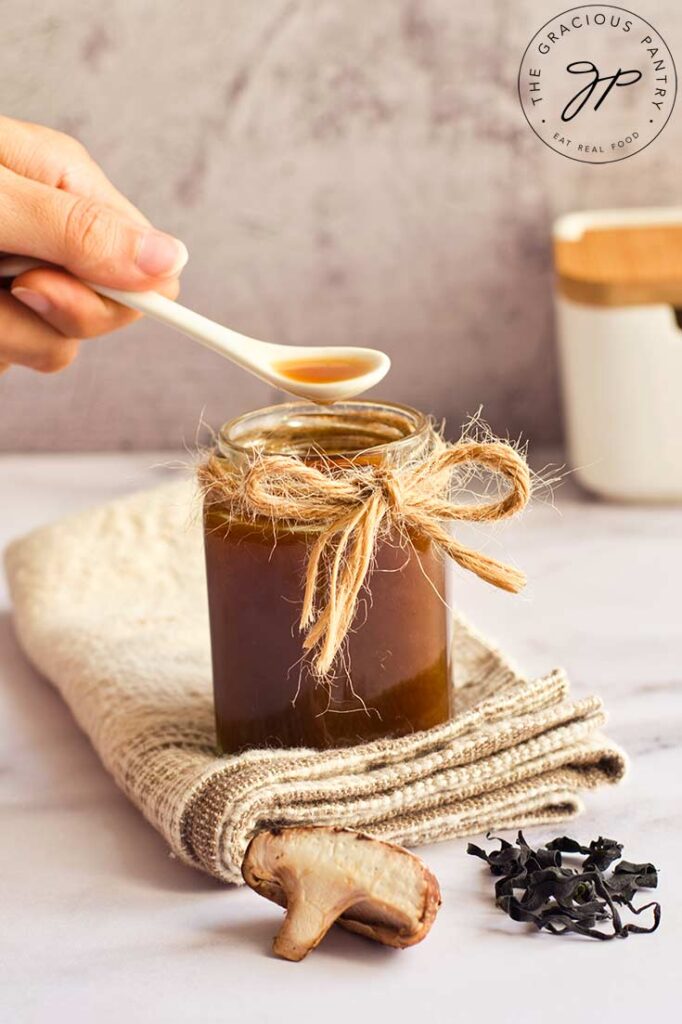
What Is Fish Sauce?
It’s an Asian sauce (or broth) that is made with anchovies and salt. The anchovies are fermented, and as you may have guessed, the smell of that can be a bit overpowering sometimes. It’s a Thai or Vietnamese recipe and it’s wonderful for adding to things like homemade vinaigrettes, pasta sauces, meats, and many Asian dishes.
What Spices Are In Fish Sauce?
There are no spices in fish sauce. It’s a mix of water, salt, and fermented anchovies. Nothing more.
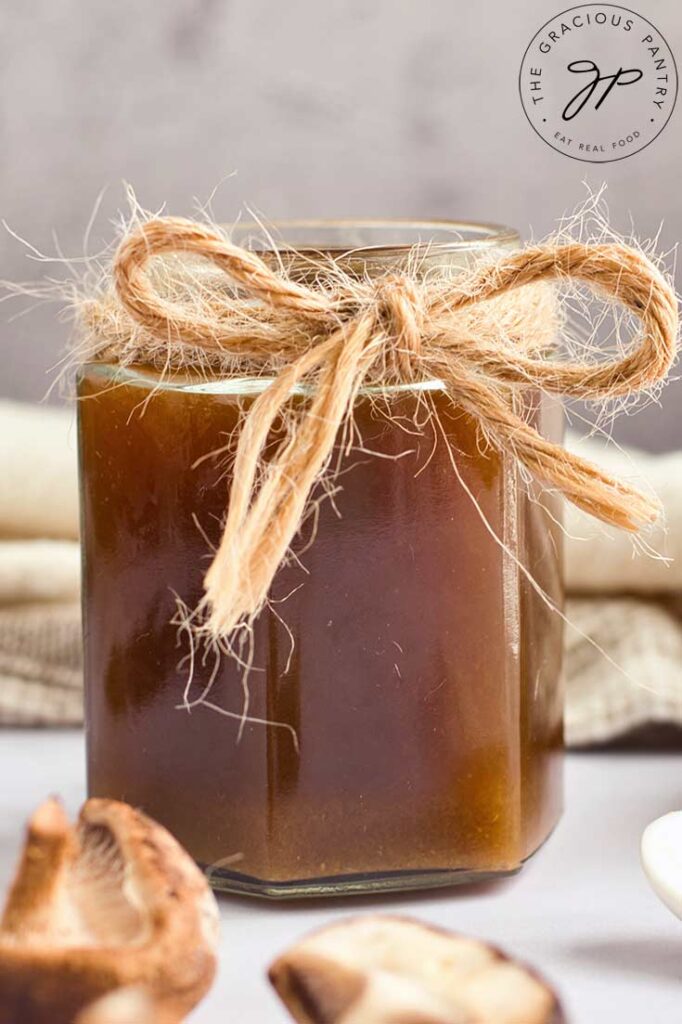
Why Does Fish Sauce Smell So Bad?
Because it’s fermented fish. Few things are stinkier in this world. But the depth of flavor it adds to recipes is unmatched and unequaled.
What It’s Commonly Eaten With Fish Sauce?
As mentioned above, it’s a condiment that can be added to many types of dishes. It adds a savory umami that you just cannot get anywhere else. Try making an Asian vinaigrette with it, some seafood soup or chowder, or marinate some beef, chicken, or pork in it. You can also use it to cook salmon or even shrimp. It’s a multi-purpose condiment much like vinegar, ketchup, or teriyaki sauce.
What Can I Use If I Don’t Have Fish Sauce?
If you don’t want to make the anchovy-free fish sauce below, here are some fish sauce substitutes you can try. They won’t give you the same depth of flavor, but they come close.
- Soy sauce
- Tamari sauce
- Seaweed
- Coconut aminos
- Oyster sauce
But lucky for you, the recipe below is quick and easy to make!

About The Ingredients
Shiitake Mushrooms – Used dried mushrooms for a deeper flavor. Fresh mushrooms for a lighter flavor.
Tamari sauce – Look for a sauce without added sugar or MSG.
Wakame seaweed – Check the ethnic aisle at your local grocery store. I believe Whole Foods also carries this, or you can get it on Amazon. Scroll down for the link.
Chickpea miso – This is wonderful stuff! Many health food stores carry it, or you can order it from Amazon. If you can’t find it, you can also use brown rice miso. Scroll down for the link. Miso is wonderful in soups!
Garlic cloves – The larger the cloves the better. You can add more if you wish. but don’t overdo it.
Water – Use good-quality, filtered water.
How To Make Homemade Fish Sauce
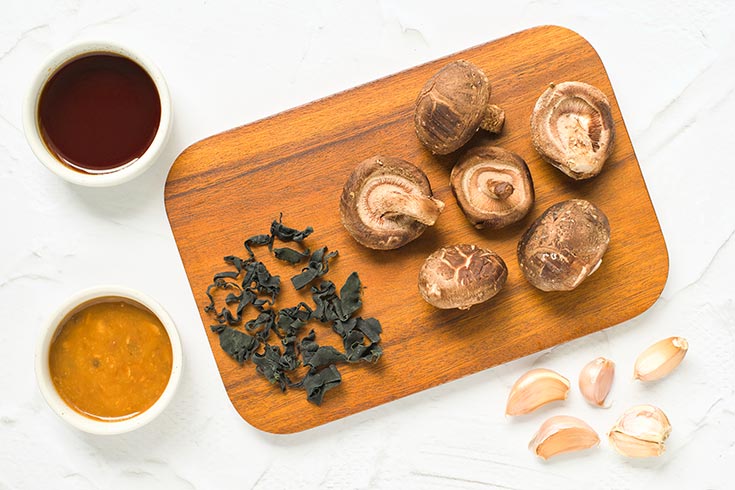
Gather all your ingredients.
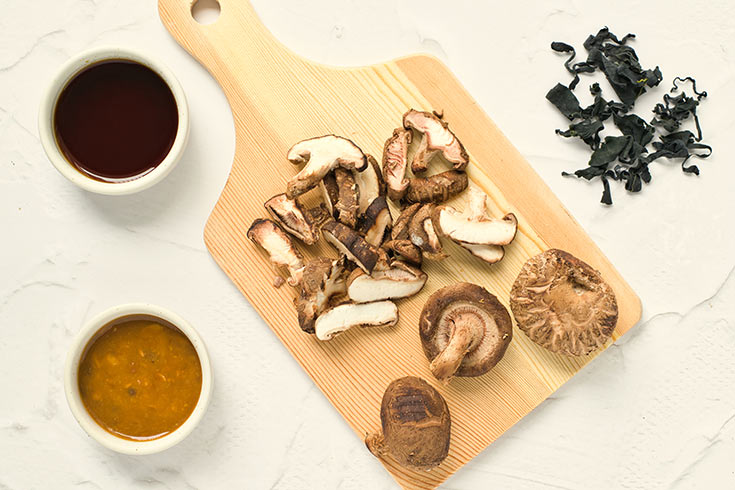
Slice the mushrooms.
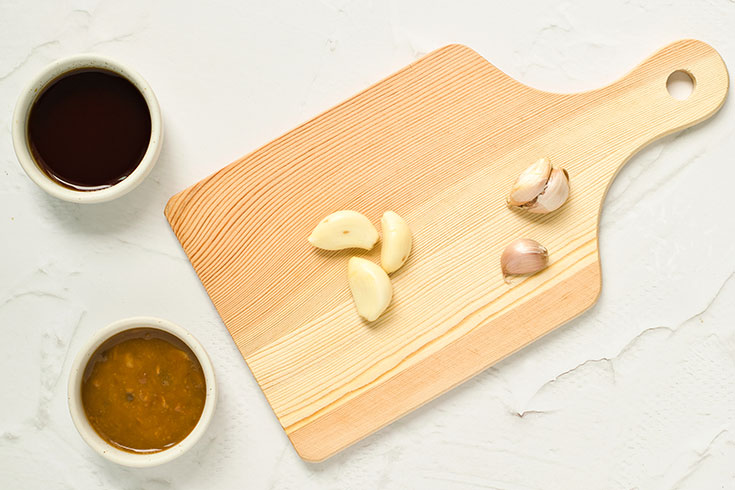
Peel the garlic.
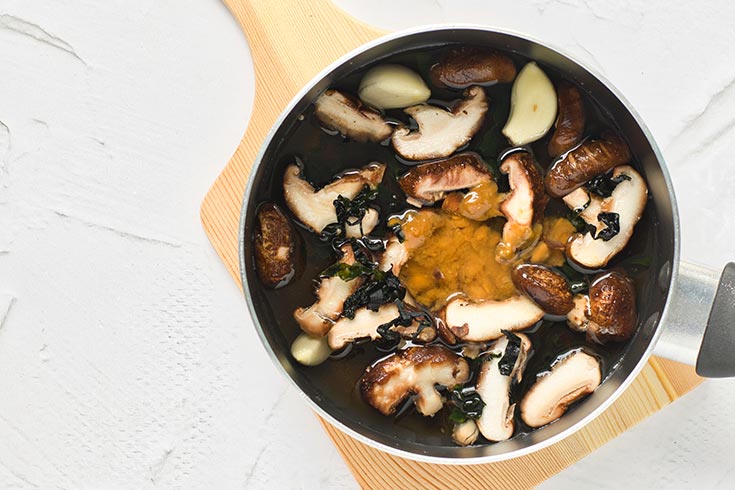
To a small saucepan, add water, the shiitake mushrooms, wakame seaweed, peeled garlic, tamari sauce, and the miso paste. Bring to a boil, then cover, reduce heat, and simmer to extract all the flavors from the ingredients for 15-20 minutes.
*If you have time, let this steep overnight or for up to 24 hours to extract the extra flavor.

Remove from heat and let it cool down to room temperature.

Once it cools off, strain the solids from the liquids using a fine-meshed sieve.
Pour the sauce into a mason jar or any glass jar of your preference. Use it to add extra flavor to your favorite meals. Use it to add extra flavor to your favorite meals.

How To Store Homemade Fish Sauce
You can store your homemade fish sauce in a sealed container in the fridge for up to 1 month, remember to shake it well before use.
Freezing Homemade Fish Sauce
Store this in an airtight, freezer-safe container and store it in the freezer for up to 1 year. You can also freeze this in ice cube trays so you can easily grab and use this in small amounts.
Recipe Supplies
If you can’t find some of the ingredients at your local store, you can easily get them on Amazon. Simply click any of the images here to be taken to that product on Amazon. (Affiliate links)
More Healthy Sauce Recipes
SUBSCRIBE
Remember to subscribe to my free newsletter to receive all my latest recipes in your inbox. Click here to sign up!
Homemade Fish Sauce Recipe Card


Homemade Fish Sauce Recipe (No Fish!)
Equipment
- 1 Pot
- 1 strainer
Ingredients
- ½ cup Shiitake Mushrooms (Used dried mushrooms for a deeper flavor)
- ¼ cup Tamari sauce
- 1 cup Wakame seaweed
- 1¼ tsp. chickpea miso
- 4 large garlic cloves
- 4 cups water
Instructions
- Gather all your ingredients.

- Slice the mushrooms.

- Peel the garlic.

- To a small saucepan, add water, the shiitake mushrooms, wakame seaweed, peeled garlic, tamari sauce, and the miso paste. Bring to a boil, then cover, reduce heat, and simmer to extract all the flavors from the ingredients for 15-20 minutes.*If you have time, let this steep overnight or for up to 24 hours to extract the extra flavor.
- Remove from heat and let it cool down to room temperature.

- Once it cools off, strain the solids from the liquids using a fine-meshed sieve.

- Pour the sauce into a mason jar or any glass jar of your preference. Use it to add extra flavor to your favorite meals.Use it to add extra flavor to your favorite meals.






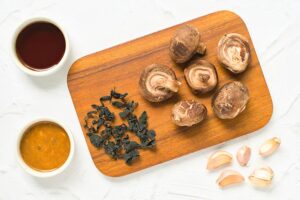


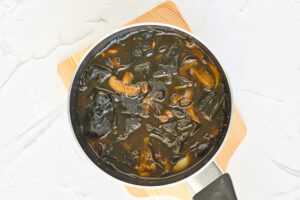
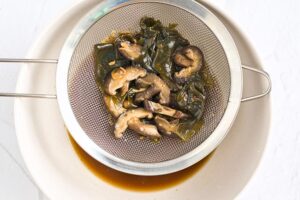

This seems intriguing. I’m curious as to why you chose wakame over kombu. So I’ll use kombu and may leave out the garlic. I do ferment squid (ika no shiokara) and may add some of that. Another option is to add dried small sardines. I’m half-Japanese, born in Tokyo and raised in the US and Europe. I’ll let you know how this turns out. Just had surgery so may take a few weeks. Thanks!
Chieko – The reason I chose wakame in my recipe was primarily due to its availability and its ability to impart a sea-like flavor, which is similar to the taste profile of fish sauce. However, I completely understand your preference for kombu. Cooking is all about personal taste and experimentation, so feel free to adapt the recipe according to your own preferences and dietary choices. This recipe is supposed to be vegan/plant-based, which is why no fish was used. Hope that helps!